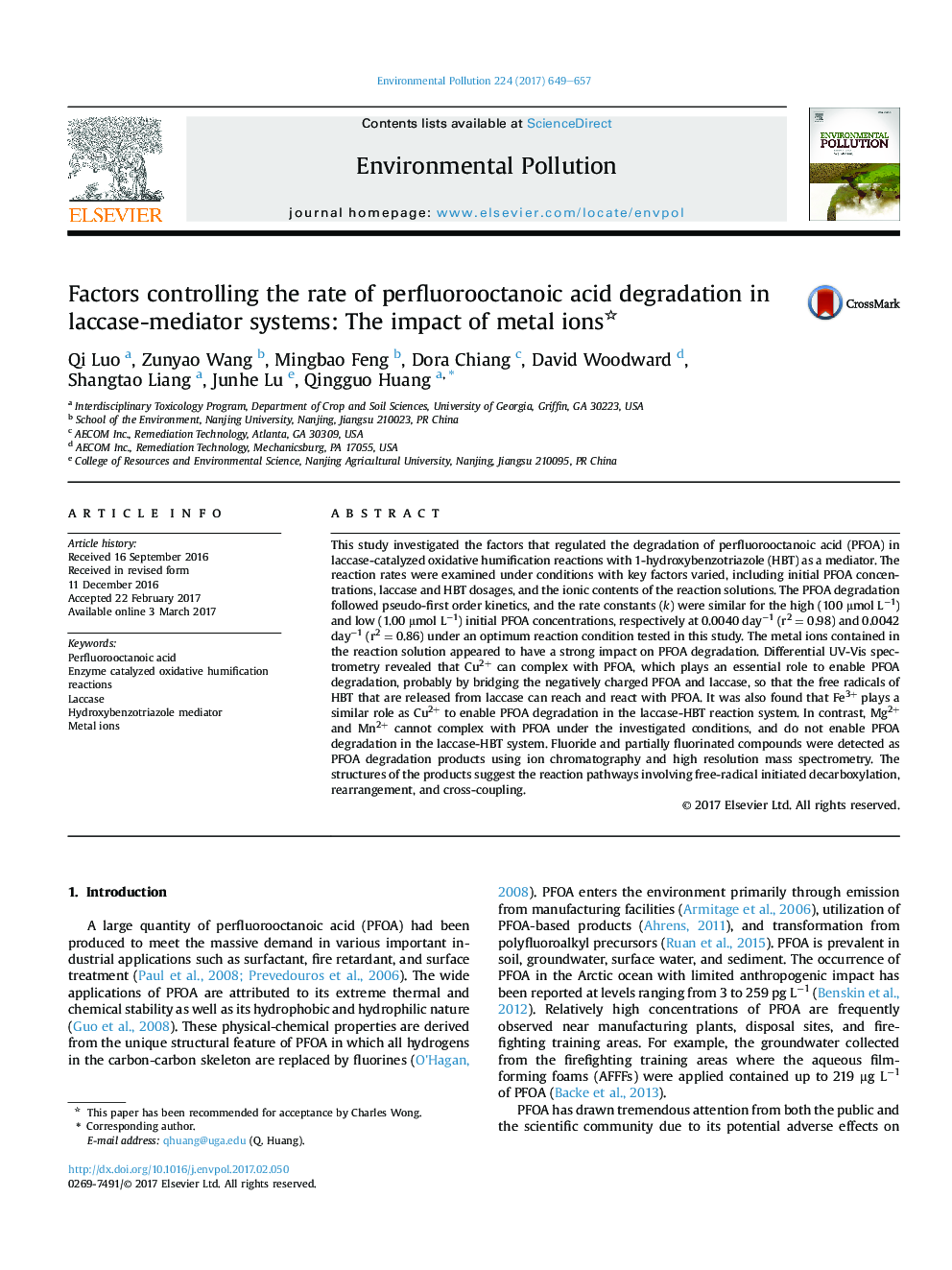| کد مقاله | کد نشریه | سال انتشار | مقاله انگلیسی | نسخه تمام متن |
|---|---|---|---|---|
| 5749423 | 1619149 | 2017 | 9 صفحه PDF | دانلود رایگان |
- PFOA can be effectively transformed by ECOHRs under natural conditions.
- Enzyme, mediator and multivallent metal ion are key factors in PFOA degradation.
- Cu2+ and Fe3+ enhance the degradation efficiency by forming complex with PFOA.
- The mechanism involves free radical rearrangement, cross-coupling and substitution.
This study investigated the factors that regulated the degradation of perfluorooctanoic acid (PFOA) in laccase-catalyzed oxidative humification reactions with 1-hydroxybenzotriazole (HBT) as a mediator. The reaction rates were examined under conditions with key factors varied, including initial PFOA concentrations, laccase and HBT dosages, and the ionic contents of the reaction solutions. The PFOA degradation followed pseudo-first order kinetics, and the rate constants (k) were similar for the high (100 μmol Lâ1) and low (1.00 μmol Lâ1) initial PFOA concentrations, respectively at 0.0040 dayâ1 (r2 = 0.98) and 0.0042 dayâ1 (r2 = 0.86) under an optimum reaction condition tested in this study. The metal ions contained in the reaction solution appeared to have a strong impact on PFOA degradation. Differential UV-Vis spectrometry revealed that Cu2+ can complex with PFOA, which plays an essential role to enable PFOA degradation, probably by bridging the negatively charged PFOA and laccase, so that the free radicals of HBT that are released from laccase can reach and react with PFOA. It was also found that Fe3+ plays a similar role as Cu2+ to enable PFOA degradation in the laccase-HBT reaction system. In contrast, Mg2+ and Mn2+ cannot complex with PFOA under the investigated conditions, and do not enable PFOA degradation in the laccase-HBT system. Fluoride and partially fluorinated compounds were detected as PFOA degradation products using ion chromatography and high resolution mass spectrometry. The structures of the products suggest the reaction pathways involving free-radical initiated decarboxylation, rearrangement, and cross-coupling.
103
Journal: Environmental Pollution - Volume 224, May 2017, Pages 649-657
